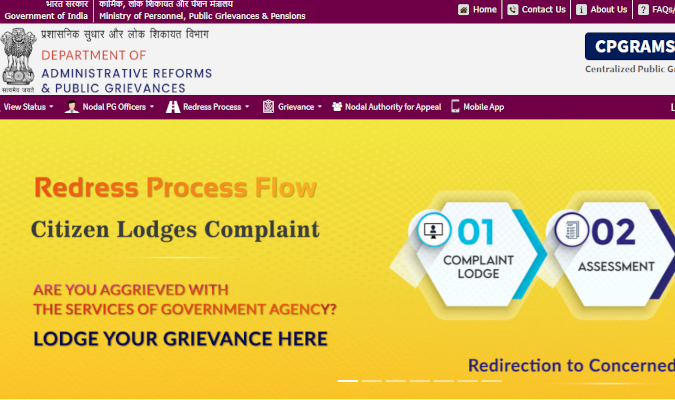Section 4(1)(b) (i): Particulars of organization, functions and duties
Functions of the Directorate General of Defence Estates are as under:
Directorate General, Defence Estates (DGDE) is the Headquarters of the Indian Defence Estates Service. DGDE provides advisory inputs on all Cantonments and Land matters to the Ministry of Defence and Service Headquarters ie Army, Navy, Air Force and other organizations under Ministry of Defence. Acquisition of lands, Resettlement and Rehabilitation of displaced persons, Hiring and requisitioning of lands and buildings, are some of the responsibilities of DGDE. It also ensures implementation of Cantonments Act 2006, Policies, Rules & Regulations and Executive instructions.
DGDE has six Principal Directorates namely, Principal Directors, Central, Eastern, Northern, Southern, South-western and Western Command under its jurisdiction. Under the Principal Directorates there are 39 Defence Estates Offices and 4 ADEO Circles for management of defence lands in the country.
There are 61 Cantonment Boards. These are local bodies responsible for providing civic administration and implementing the Central Govt schemes of social welfare, public health, hygiene, safety, water supply, sanitation, urban renewal and education.
Section 4(1)(b) (ii): Powers and duties of its officers and employees
Work of the Directorate General Defence Estates is distributed among different divisions, each headed by a Addl. DG., Deputy Director General., Asstt. Director General, Section Officer / Asstt. Section Officer/ Office Superintendent respectively, divisions are manned by subordinate staff viz. Sub-Divisional Officer-II & I, Multi Tasking Staff (MTS), Junior Secretariat Assistant (JSA), Senior Secretariat Assistant (SSA) equivalent Upper Division Clerk, Data Entry Operator etc
The structure of the Service is 3 tiered. At the apex level is the Directorate General, located at Delhi Cantt. The officers manning the Directorate General are members of the IDES. The Directorate General Office is headed by the Director General, who is in the Apex scale (Rs. 80,000/- fixed as per 6th CPC). There is one Senior Additional Director General (HAG) and 04 Additional Director Generals (SAG) who are in charge of specific Divisions. The Directorate General advises Ministry of Defence and Services Headquarters on all Cantonment and Land matters. It supervises the implementation of the Cantonments Act 2006, rules and regulations, Government policies and executive instructions. The Directorate General also addresses the land and building requirements of user Services through acquisition, requisitioning or hiring. The middle level comprises the Directorates as Principal Directorates supervising the field offices. There are 6 Directorates, co-located with the 6 Army Commands. These are located at Lucknow, Pune, Jammu, Kolkata, Chandigarh and Jaipur. The Directorates are headed by the Principal Directors (HAG) assisted by Directors (SAG) and other Staff officers, all from the IDES. At the field level, there are Chief Executive Officers in the 61 Cantonment Boards and Defence Estates Officers in 37 Defence Estates Circles and 04 Assistant Defence Estates Offices, all located at the cutting edge of administration. The Chief Executive officer (CEO) is the executive head of the Cantonment and responsible for the day to day administration. The Defence Estates Officer (DEO) is an agent of the Central Government in the domain of land management. Both CEOs and DEOs are IDES officers. The National Institute of Defence Estates Management (NIDEM) is the training institute of the department and provides induction-training to probationers and in-service training to officers and staff of the department. It is headed by the Director (SAG) and assisted by 02 Joint Directors (JAG)
Section 4(1)(b)(iii): Procedure followed in the decision making process including channels of supervision and accountability.
The cases are generally processed at the division level and the files are submitted to Asstt. Director General /Deputy Director General/Addl. Director General/ Sr.Addl. Director General/ Secretary /Ministers, as per the requirement of each case.
The work allocation information given above under Section 4(b) (ii) indicating distribution of work among different levels/divisions covers the accountability part in this provision.
Section 4(1)(b)(iv): Norms for the discharge of functions
The norms set by Govt. of India as a whole are followed.
Section 4(1)(b)(v): Rules, regulations, instructions, manuals and records held by it or under its control or used by its employees for discharging its functions.
The rules, regulations, instructions, manuals etc. issued by Govt. of India from time to time are followed for discharging its functions.
Section 4(1)(b) (vi): Statement of the categories of documents that are held by it or under its control.
Both classified and unclassified documents relating to the business allocated to this Ministry as per the Government of India (Allocation of Business Rules), 1961 are held.
Section 4(1)(b) (vii): Particulars of any arrangement that exists for consultation with or representation by the members of the public in relation to the formulation of its policy or implementation thereof.
The Department, generally, does not directly deal with the members of public in relation to the formulation of its policy or implementation thereof.
Section 4(1)(b) (viii):
The Indian Defence Estates Service (IDES) is one of the Group ‘A’ Civil Services of the Govt. of India. The work of IDES officers for Defence Estates Organization, under the administration control of Ministry of Defence. The Organization traces its origin to 1926 when decision was taken by the Governor General-in-Council to establish the Cantonment Department on permanent basis. Defence Estates Organization manages and administers civil affairs of Cantonments through Cantonment Boards. These Boards are local autonomous bodies of self governance, with statutory status. The IDES officers are posted to these Boards as Chief Executive Officers. In this capacity, they have the opportunity to act like ‘fountain of inspiration’ for others and become the catalyst for substantial changes in the socio-economic lives of the local residents. The Cantonment Boards are mandated to maintain schools, hospital, basic infrastructure (viz. roads, street lights, water supply etc.), wholesome environment and social security system in Cantonments. All 61 Cantonments of the country reflect harmonious relationship between the armed forces and local civil population. Most of the Cantonment also contain rich legacy of the past as may be witnessed inter alia in its layout, sprawling Old Grant Bungalows, various land tenures, important monuments, rich documentation and folklores. In other words, Cantonments are spatial representation of glittering historical events, spread all across the space. Ministry of Defence is the biggest land holder among all the Ministries of Govt. of India. The area of Defence land, measuring approximately 17.57 lakh acres, is placed with various land users, such as Army, Navy, Air Force and other organization, like ordnance Factories Boards, DRDO, DGQA and CGDA etc. The Defence Estates Organization endeavours to ensure optimum utilization of Defence land. It also secures the proprietary, occupancy, tenancy and other legal rights of Ministry of Defence, through 37 Defence Estates Offices located in different parts of the country. These Defence Estates Offices are also headed by IDES officers.
Section 4(1) (b) (ix): Directory of officers and employees
Section 4(1) (b) (x): Monthly remuneration received by officers and employees
Officers and employees in the Department of Defence are being paid monthly remuneration in their respective Pay Band/Level as mentioned below after revision of pay scales by 7th Central Pay Commission and the other allowance as applicable:
| S. No | Post | Level | Pay Band |
|---|---|---|---|
| 1 | Director General equivalent to Secretary | 17 | 225000 |
| 2 | Sr.Addl. DG (DGDE) equivalent to Additional Secretary | 15 | 182200-224100 |
| 3 | Addl. DG (DGDE) equivalent to Joint Secretary | 14 | 144200-218200 |
| 4 | DDG (DGDE) equivalent to Director | 13 | 118500-214100 |
| 5 | SADG (DGDE) equivalent to Deputy Secretary/Sr.PPS | 12 | 78800-209200 |
| 6 | Asstt.DG (DGDE) equivalent to Under Secretary/PPS & | 11 | 67700-208700 |
| 7 | DADG (DGDE) equivalent to Section Officer/PS (NFS on completion of 4 years Service in the grade) | 10 | 56100-177500 |
| 8 | Section Officer/PS & equivalent | 8 | 47600-151100 |
| 9 | Assistant/PA and equivalent to ADEO (DGDE) | 7 | 44900-142400 |
| 10 | Office Superintendent and Steno Gr.II | 6 | 35400-112400 |
| 11 | Data Entry Operator | 5 | 29200-92300 |
| 12 | UDC/Steno & equivalent | 4 | 25500-81100 |
| 13 | LDC/ Staff Car Driver & equivalent | 2 | 19900-63200 |
| 14 | MTS | 1 | 18000-56900 |
Section 4(1) (b) (xi): Budget allocated to each agency, indicating the particulars of all plans, proposed expenditures and reports on disbursement made
(In thousands)
| Details of Grant | Actual 2020-21 | RE 2021-22 | BE 2022-23 |
|---|---|---|---|
| Revenue General Secretariat Services 2052 | 4971500 | 3733000 | 3963300 |
| Major Head – 2059 Public Works | 43200 | 52900 | 56200 |
| Capital Head Outlay for Public Works – 4059 | 84000 | 1293600 | 1700300 |
| Caital Major Head for outlay on Housing – 4216 | 15400 | 17200 | 30000 |
Section 4(1) (b) (xii): Manner of execution of subsidy programmes, including the amounts allocated and the details of beneficiaries of such programmes
NIL
Section 4(1) (b) (xiii): Particulars of recipients of concessions, permits or authorization granted by it.
NIL
Section 4(1)(b) (xiv): Details in respect of the information, available to or held by it. Reduced in an electronic form.
As available on the website of the Directorate General of Defence Estates.
Section 4(1) (b) (xv): The particulars of facilities available to citizens for obtaining Information, including the working hours of a library or reading Room, if maintained for public use.
Particulars of facilities available to citizens for obtaining Information are available on the website of Directorate General of Defence Estates. However, there is no public library or reading room maintained by this Department for public use.
Section4(1)(b)(xvi): The names, designations and other particulars of the Public Information Officers.
Names, designations and other particulars of the Public Information officers are available on the link below:
RTI Contacts (CPIOs / AAs )





